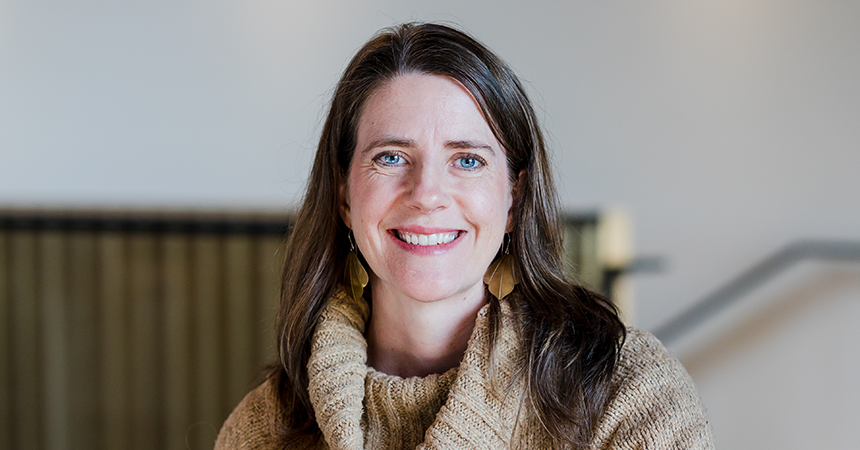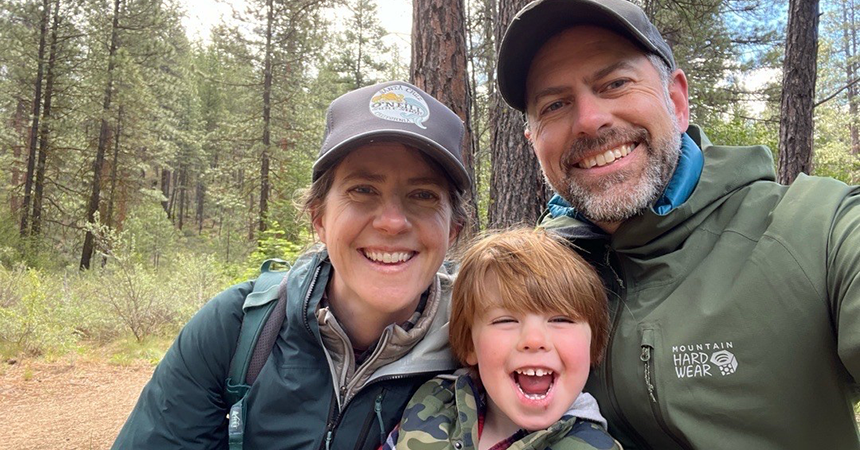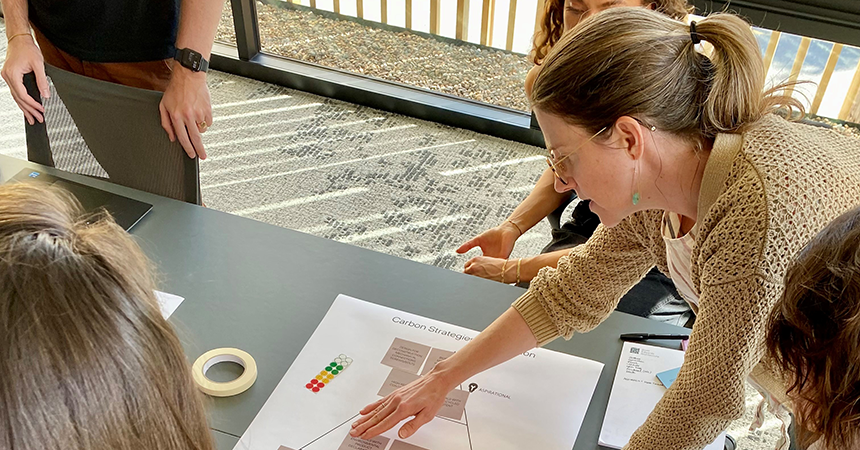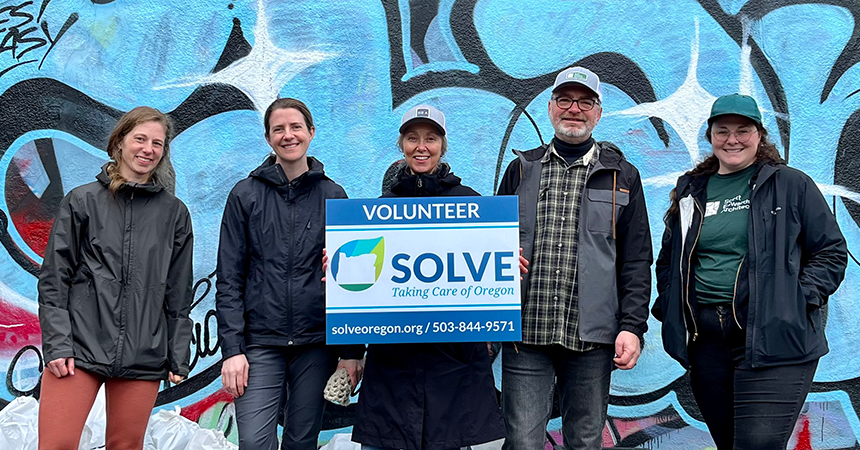
This is a part of a series of blog posts amplifying community voices. These views reflect the perspective of the Changemaker and do not represent those of Energy Trust.
Juliette Grummon-Beale has over 15 years of experience in architecture and has worked on a wide range of projects including municipal buildings, libraries, community centers, and higher education facilities. In her role as Sustainability Director at Scott Edwards Architecture (SEA), she leads the firm’s sustainability program by creating policies, workflows, tools and best practices, and guides teams to find impactful solutions on their projects. In 2023, she was an Energy Trust Net Zero Emerging Leaders Mentor, where she collaborated with an architecture intern to develop a process to track energy use across SEA’s portfolio and employ tools like energy modeling to advance individual projects. She is also a member of the National Council of Architectural Registration Boards (NCARB) and LEED accredited in building design and construction.
You majored in environmental studies in college. Is that what led to getting your master’s degree in architecture and focusing on sustainability in your career?
When I was looking at colleges, I knew I wanted to go to a small liberal arts school where I could get a variety of experiences. That led me to Oberlin College in Ohio. I had set out to study Art History but was immediately drawn to classes on marine science and ecology, where I learned about climate and the natural world. I continued to be more and more drawn into those studies.
While I was in college, Oberlin’s Adam J. Lewis Center for Environmental Studies was completed. A hallmark of green building, it is also one of the first net-zero energy buildings in the country. While it’s primarily a classroom building, it also serves as a laboratory for studying green design, which inspired my interest in sustainable architecture. I then went to University of Oregon (UO) for its strong emphasis on sustainable design and proximity to Portland, a city filled with firms known for this work. I started my career working in smaller firms, while volunteering and then chairing the AIA Portland’s Committee on the Environment. It was a great experience, networking with peers, organizing educational events and green building tours, and directing the committee’s goals.
What continues to inspire you in your work in sustainability?
I have a lot of optimism for the future and the newest generation’s dedication to the planet. I look to young leaders like Greta Thunberg inspiring global activism as well as to students I’ve mentored, and I see a more balanced and healthy way of thinking about our relationship with the environment coming into focus. I sat in on a review for UO architecture students discussing best methods to utilize biobased materials like mycelium block and hempcrete. Being a parent of a young child also inspires me—all the awe, unconditioned free-flowing ideas, love and enthusiasm. I collect these gems to pull out at times of frustration to renew and refocus.
What was it like to be a mentor for the Energy Trust Net Zero Emerging Leaders Internship (NZELI) program?
The Net Zero Emerging Leaders Internship (NZELI program) is a wonderful way for firms to get started with meeting their 2030/2040/2050 carbon commitments. As SEA’s mentor, I oversaw hiring our intern, creating an internship workplan and setting goals for our first year of AIA 2030 reporting. I’ve always loved mentoring, either meeting with students informally for coffee or taking part in firm mentorship programs. This mentorship was unique because it was so focused and had specific set outcomes and deliverables. Energy Trust also provided a strong framework with regular mentor meetings and a final public presentation by the interns sharing their major findings.
Our intern Melanie Guyer, a Master of Architecture student at UOI, helped us report 136 projects and energy model 10 of those! And on top of that, she created tools for us to use in future reporting and analyzed all the data. It was an amazing effort! We were so happy with the Energy Trust internship program that we continue to offer a winter sustainability internship every year to help complete our reporting, regardless of whether we get grant funding for it.
What do you wish people knew about advancing sustainability in the built environment?
In a time of growing climate anxiety, many folks feel despair and are overwhelmed. I’m reminded of a quote by Lao Tzu, “A journey of a thousand miles begins with the first step.” The first thing to do is just get started and transform despair into action. Focus on one area where you are most interested or that regularly comes up in your work. Even small changes, like specifying one material over another are scalable on projects and can have a huge impact. At SEA, developing firm-wide best practices for responsible material selection was key to integrating sustainable design into each of our projects.
Architects have 26 times the buying power of a typical U.S. citizen, so, let’s use it! You don’t have to be an expert in sustainability to communicate transformational ideas to clients. Just take a little time to do research or find an industry expert like a product rep or consultant to help you make a compelling case.
What recent changes have you seen, or do you expect to see, in your industry?
It’s exciting to see growth in renewable energy, energy efficiency and electrification, all of which are major means to cut carbon emissions. Over the last decade, there has been major growth in the renewable energy industry, particularly solar, due to falling prices, tax credits and interest from the private sector. I just read that in 2023, 55% of all new electric capacity in the US came from solar (Source: Solar Energy Industries Association (SEIA). States you’d think of as fossil-fuel-based are actually leading the way – like Texas, which is number two in the country for megawatts produced by solar, behind California (Source: SEIA). We are finding from these advances, more of our projects are implementing solar and the payback periods are penciling for private development.
What excites you most about the future of your work?
The buzz around community resilience is very exciting, including the funding that’s now available for projects to implement resiliency measures, or to become resiliency hubs for their communities. Resilience pops up in all of SEA’s work: A single-family residence seeking back-up power during winter-storm outages, affordable housing with community rooms that can serve as cooling shelters during summer heat waves, community health clinics aiming to be a resource for the larger community during a disaster, and the list goes on.
Do you see any major challenges in prioritizing sustainability in building design?
We’ve recently had a few projects go on hold due to federal funding being pulled with changes in government. There are also many market-driven factors that put the brakes on progress, like the higher price of heat pumps compared to less efficient options. These systemic challenges and considerations are significant and they impact our work and projects.
Do you have any advice for women who are considering a career in architecture, or sustainable design?
Over the course of my career, I’ve seen a lot of positive change—more women architects, more women in various roles within firms and more life-work balance for everyone. Yet the balance of leadership in our industry is still predominately male. It’s always been important to me to seek out firms that have women in top leadership roles or that are led by women. I’ve worked for a couple women-owned firms and found my leaders to be inspirational.
I’ve also found it helpful to actively seek and engage mentors. There are various organizations that work to pair folks up—I met a couple mentors through the AIA Committee on the Environment and am currently mentoring a student through the New Building’s Institute Next Gen Program. University alumni chapters are another great resource, and I’ve loved the conversations I’ve had with students who’ve contacted me. Last, I think that it’s important to become a leader and work for change. As a young professional, learn from your role models’ stories, the leaders in your firm and your mentors. Use those experiences to prepare yourself to lead and bring about the change you want to see.



